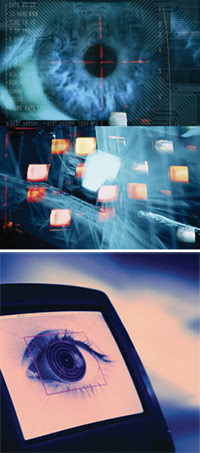Interlaced sensors in FireWire cameras aid applications such as ophthalmology.
Michael Cyros, Allied Vision Technologies Inc.
Although industrial digital cameras for the machine vision market were introduced nearly 20 years ago, about 65 percent of all camera units sold in North America are still analog, according to the Automated Imaging Association. The main reason is that, whereas most new system designs are based on digital cameras, updating legacy systems based on analog technology has proved difficult for many industrial users.
The problem is that the majority of analog cameras operating in older machine vision systems use standard interlaced video formats, while most digital camera manufacturers use newer progressive-scan sensors for their product offerings. This makes it difficult to migrate for two reasons: Progressive-scan cameras are hardly compatible with interlaced-based systems, and some users do not want a progressive-scan sensor at all.

Interlaced technology is key in many medical applications, including ophthalmology.
For many industrial applications requiring high sensitivity, one advantage offered by interlaced sensors is that they generally are more sensitive than progressive-scan sensors because more time is available to expose the sensor to light. Another benefit offered by several commonly used interlaced sensors is enhanced sensitivity in both the visible and near-infrared range.
If so many users value the interlaced sensor technology in analog systems, why not combine the benefits of interlaced with those of a digital interface? Digital interlaced cameras can upgrade the many existing systems at minimal cost. With the Guppy camera, Allied Vision Technologies GmbH of Stadtroda, Germany, offers a way to eliminate the frame grabber as well as the older analog camera.
High sensitivity
Interlaced sensors are especially suitable for applications requiring high sensitivity, such as low-light applications, or for those using lighting in the red or NIR range just outside the visible spectrum. One example is ophthalmology, which requires low-light sensitivity because adding more light would be disruptive to the patient’s eye. Another example is endoscopy, used in medical and industrial applications to inspect tight spaces. It is also a typical field in which low visible light conditions, or nonvisible light energy in the NIR range, make the high sensitivity of interlaced sensors valuable.
In this particular example, there is no way that the lighting conditions can be improved because the endoscope is inserted into a human body or a closed object, such as a tube, with no light other than that provided by the endoscope itself. This is a typical case where the high sensitivity of an interlaced sensor is key and cannot be equaled by a progressive-scan sensor.
The advantage of the interlaced digital camera is that it is now possible to migrate this kind of application from analog to digital. Users who recently invested in analog interlaced systems can retain much of their investment because they still can use their existing machine interface, software, timing, lighting and optics system.
The interlaced Guppy is equipped with a 0.25-, 0.29-, 0.38- or 0.44-megapixel Sony CCD sensor — the same interlaced sensors that are used in the majority of analog camera-based systems. That means that existing lighting, lenses or software settings that were tuned for an interlaced sensor with a specific size, resolution and sensitivity do not need to be replaced or retuned. In fact, the only major change required is the interface between the camera and the system. These cameras use FireWire (IEEE-1394a), a widespread industry standard that offers all the benefits of digital connectivity — high fidelity, high data rate and high-speed data transmission rates — without the need for a frame grabber.
Another driver for the trend to digital cameras is that machine vision systems have been facing an increasing number of notices of discontinued analog cameras or frame grabbers because of parts obsolescence and last-time buys. With the interlaced digital cameras, however, investments in interlaced sensor-based systems are safeguarded, and investors have the added advantage of upgrading to digital.
Meet the author
Michael Cyros is president of Allied Vision Technologies Inc. in Newburyport, Mass.; e-mail: [email protected].